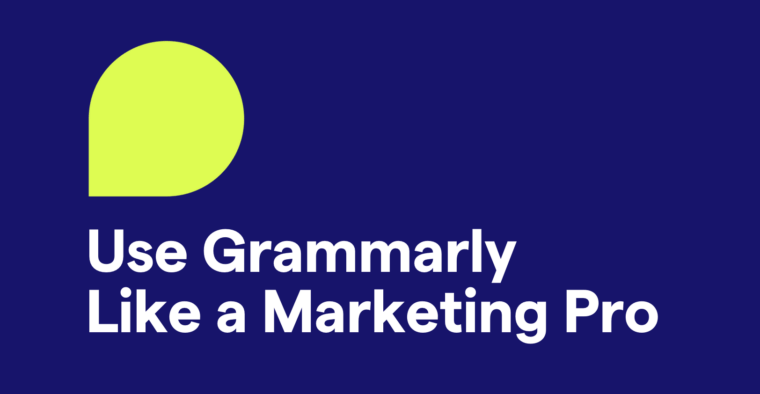
Whether you’re drafting your first résumé and cover letter or you’re a veteran employee or freelancer looking to improve your professional communications, it’s important to understand business writing essentials.
Business writing is a specific type of written communication used throughout all types of business operations, and it’s fundamental to communicating effectively and succeeding in any professional environment. This guide will help you learn what business writing is, why it’s important, and how to improve your own business writing for effective communications.
What is business writing?
Business writing is professional communication used to convey information, instruct, make proposals, or establish agreements with clarity, conciseness, effectiveness, and professionalism.
Why is business writing important?
Business writing is important for several reasons:
- Clear, effective communication: Accessible, concise writing is critical for business because it minimizes misunderstandings and confusion, helps set expectations, and promotes shared understanding.
- Efficiency and productivity: Clear communication saves time by ensuring that messages are understood accurately the first time they are communicated.
- Demonstrating professionalism: Using appropriate tone and language conveys professionalism, which helps establish credibility and trust among colleagues, clients, and stakeholders.
- Documentation and record-keeping: The written word—whether in an email, an annual report, or anything in between—acts as a formal record, documenting agreements, decisions, and important information. Accurate, well-documented business writing can serve as evidence to support or defend legal claims or disputes and uphold accountability.
- Compliance and legal purposes: In certain contexts, written language ensures compliance with regulations and legal requirements. A contract is a good example. In such cases, standards must be clearly and thoroughly explained according to specific requirements and policies.
- Enhancing brand image and garnering influence: Consistent, well-crafted communication strengthens brand identity, fostering a trusted, favorable impression among clients and the public. For this reason, business writing applies whether your writing is formal or informal.
- Convincing clients, partners, and customers to act: Effective, concise, clear, professional, and on-brand marketing communications can capture attention, quickly convey information of interest, and inspire engagement, especially when a powerful call to action is included.
Types of business writing
Business writing should be applied to all written business materials, including, but not limited to, the following:
Job applications
An application typically includes your name, contact information, work experience, skills, education, and other pertinent details as well as the accompanying cover letter.
Proposals
These formal business documents outline a suggested plan, idea, or project and are designed to persuade others to accept, support, or fund a specific course of action. A well-written proposal leaves the reader with a clear understanding of what is being offered and answers any questions they may have about it.
Presentations
These combinations of words and visuals often use slides, multimedia, or spoken content to communicate information, ideas, or messages on a particular topic to an audience.
Emails
Business emails should be formal emails and include a relevant subject line, greeting, the body copy, and an email signature or block of text featuring your name, job title, company, and contact information. Sometimes additional information may be included, such as a quote, website link, social media handles, and pronouns.
Business letters
There’s a known structure to business letters that calls for specific elements, such as the recipient’s name and contact information, the date, a greeting, the body copy, your name and contact information, a closing, and a reference to enclosures or attachments, if applicable. Reference letters have similar formality.
Business plans
Business plans are roadmaps for businesses, outlining business fundamentals, goals, strategies, and more. A well-defined, easy-to-understand roadmap provides a clear path to achieving your business goals, whether you’re creating the plan for yourself or sharing it to raise funding or get guidance.
Reports
Reports aim to inform and summarize information about a specific subject, project, or situation. They often include data, findings, analysis, conclusions, and recommendations, all of which are best presented in an organized manner.
Memos
Short for “memorandum,” a memo is a concise document used for internal communication within a business. Because memos tend to be brief, use words judiciously forfor clarity and impact.
Spreadsheets
While the primary function of spreadsheets is to handle numerical data and perform calculations, they also contain headers, labels, descriptions, or explanatory notes within cells or comments. Selecting your words carefully ensures clarity and accuracy.
Speeches
Business speeches start as written documents that should focus on getting their points across clearly, concisely, professionally, and in an engaging manner.
Press releases
This official communication designed to share newsworthy information with the media tends to have specific formatting for easy scanning. Press release elements, whether written by a person or AI, include a headline, date of issue, body copy explaining the news, quotes from relevant individuals, a boilerplate summary of the issuing company, and contact information for media inquiries.
Copywriting
The goal of this written art form used in advertising, websites, emails, product descriptions, and more is to influence an audience to take a particular action, whether it’s to read, engage, purchase, share, or more. While copywriting includes writing in the voice or personality of the brand, it also adheres to the tenets of good business writing.
White papers
These comprehensive reports educate readers, provide insights, and influence decision-making through an in-depth examination of a specific issue, technology, product, or concept. White papers often include data, statistics, case studies, and expert opinions, all of which are thoughtfully organized and stated with a formal, authoritative tone.
10 keys to effective business writing
Business writing can take many forms, but its goal is unwavering: to communicate clearly, effectively, and succinctly. Apply the following keys to your professional communications to experience the benefits of great business writing.
1 Commitment to purpose
To craft succinct, clear communications you need a clear message. Identify the purpose of your message, then use it as your guide to ensure you stay on point.
2 Respect for your audience
To reach your audience, you have to speak their language. Identify your key audience, then consider what they need or want to know, their priorities, and the best way to organize your information to appeal to them.
3 Formality
Formality in business writing encompasses the whole professional package—your writing’s tone, structure, and language and the format in which you present it. Pay attention to all these elements as you craft your document.
4 Appropriate tone
The tone of your writing should be appropriate for your audience, the subject matter, and the type of document. However, your tone should always convey professionalism and mind contextual nuances. For example, in a formal letter, it’s appropriate to greet the reader by last name rather than first name, while an announcement about a surprise day off would be written in a more enthusiastic tone than one about a company closure.
5 Proper format
Business writing adheres to industry-standard formatting, which may vary depending on the document type. For example, presentations include headlines, talking points, and visuals, while résumés feature text blocks. For letter writing, memos, and other standard written communications, business writing often follows the popular organizational formula OABC (opening, agenda, body, closing).
6 Clarity
Strong business writing features clear, straightforward messages that are easy for the reader to understand. For optimal clarity, use short sentences and plain language while focusing exclusively on the subject at hand. When presenting a lot of information, consider employing short paragraphs or lists to make the content easier to skim.
7 Conciseness
Concise does not mean abrupt or blunt. It means clearly conveying your message in the fewest amount of words possible. To do this, avoid fluff, jargon, and off-topic information. Also, reread and revise your work, eliminating unnecessary words (look for adjectives and adverbs), replacing long words with short ones, and breaking up long sentences.
8 Call to action
Some writing is purely informational. But if you want the reader to do something, include a call to action (CTA). A CTA is critical for marketing, advertising, sales, or any form of communication aiming to prompt a response. Give your reader clear guidance on what they can do next to help you achieve your business goals and be sure to include necessary incentives or reasons.
9 Accuracy
Precision and correctness of information are integral to quality business writing. It establishes professionalism, lends credibility to the content, and defends against confusion and, in certain cases, possible legal issues.
10 Mistake-free
Proper use of grammar and punctuation is crucial if you want your writing to be taken seriously. Always edit, proofread, and double-check your work with the help of AI writing assistance.
Business writing FAQs
What is business writing?
Business writing refers to professional communication used to convey information, instruct, make proposals, or establish agreements with clarity, conciseness, effectiveness, and professionalism.
When do you use business writing?
Business writing should be applied to all written business materials, including, but not limited to, job applications, proposals, presentations, emails, business letters, business plans, reports, memos, spreadsheets, speeches, press releases, copywriting, and white papers.
What are three essential parts of business writing?
Three essential parts of business writing are clear, concise communication; relevance and purpose of content; and professionalism in tone and format.






